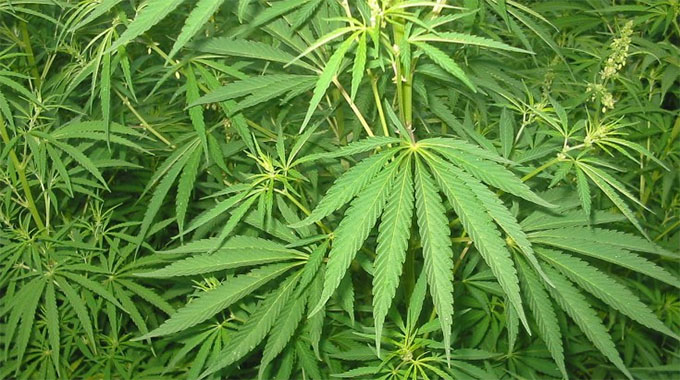EDITORIAL COMMENT: New crop mix must work towards exports

ZIMBABWE has already smashed the wheat harvest record, set just a year ago, with more than 411 000 tonnes brought in by last week and most of the final 14 percent still outstanding expected to be harvested by yesterday.
With demand at just 360 000 tonnes, although this does rise a bit each year as the population grows and more people add bread to their diet, there will be a significant surplus and, because wheat harvests are pretty well guaranteed thanks to the crop being grown totally under irrigation, there is almost zero risk in starting exports.
Last year, the first year ever that there was a surplus, produced just 15 000 tonnes over local demand, and quite correctly that was taken into reserve stocks so that there was no temporary shortage during the early days of this year’s harvest.
There is always a gap between wheat being harvested on the farms and the actual delivery of grain to the Grain Marketing Board and other contract buyers, so we need the odd few weeks of supply to be readily available.
There will also be a small fraction of the harvest that is below premium grade, although the Ministry of Lands, Agriculture, Fisheries, Water and Rural Development reckons that the overwhelming bulk of the crop will be premium grade, and so suitable for milling into flour, or for that matter suitable for export.
Zimbabwe is the only country in SADC self-sufficient in wheat, and now with a wheat surplus. The other self-sufficient country in Africa is Ethiopia: everyone else imports at least part of their requirements and that need has raised questions across much of Africa because of the difficulties some face with the conflict in Ukraine, not only a major supplier itself, but also the most logical route for the Russian and Belarus exports.
Zimbabwean wheat is not the cheapest in the world, because Zimbabwean farmers are paid a premium to cover the costs of buying electricity and water to grow the crop in the first place. The 100 percent irrigation requirement does ensure that the crop is produced, but also adds to costs.
For local markets this is not a problem. The high transport costs of importing wheat from eastern Europe or South America and then moving it up from the ports to Zimbabwe can be instead used to cover the higher production costs of Zimbabwean farmers without distorting markets or pushing up the cost of flour, bread and other wheat products in Zimbabwe.
But these higher production costs will need to be offset by lower transport costs when wheat is exported, which will tend to limit exports to neighbouring countries or at least keep them within the region.
As no one has ever before exported wheat within Southern Africa, the landed costs of imports from Zimbabwe have possibly never been worked out, although some initial feelers have been made over potential exports.
Zimbabwean wheat will almost certainly be competitive in some regional markets, but those closest to the wheat depots and silos will be the most obvious to explore first.
Of course, quality of wheat in exports will be a paramount selling point and so it is vital that the farmers produce a quality crop and that this quality is retained in storage and in transport.
There might well be need for some sort of certification for at least the initial exports while we establish the Zimbabwean brand. The fairly dramatic upsurge in wheat production in the last few years shows that it is no longer a case of restoring Zimbabwean agriculture when we come to setting national targets and setting priorities within agriculture, but rather of pushing production beyond historical yields.
We have now seen this in several crops, including tobacco and wheat, where the present crops are the largest historically and where each year a new production record is set.
Commercial wheat growing started in 1966 when the UDI regime was pressing import substitution very hard.
Despite some serious efforts, local wheat production never came even reasonably close to self-sufficiency, even in the best seasons, until about a couple of years ago, when the gap was fairly small, and then last year when the first-ever surplus was grown.
This major surge in production under the Second Republic was built around a multiple approach. Wheat farmers needed access to input funding, they needed access to irrigation water, they needed access to irrigation equipment, they needed guaranteed power supplies to power that irrigation equipment, they needed a producer price that would make at least the efficient farmers profitable, and they needed access to combine harvesters so that the crop could be cut and collected.
All the required measures were put in place and so we now talk about record harvests, exports and the like instead of talking about how much foreign currency needs to be supplied by the Reserve Bank of Zimbabwe to supply the imports.
A lot of the 249 combine harvesters are available thanks to mechanisation deals with Belarus. That country used to be a significant supplier of wheat, but trade has switched and grown as it became a significant supplier of hard-wearing and quality mechanised equipment and will no doubt continue to grow as Zimbabwe through local value addition is able to export processed tropical products and processed metals.
The switch in Zimbabwean agriculture from working out imports to working out exports also shows the success of land reform.
This was not just to correct colonial land policies, but also to increase production, something that did require a lot of extra policies introduced by the Second Republic so that those with land could grow a lot more.
But as we move into the world of surpluses, we now need to plan our agriculture more precisely and in line with that radical change.
Already planners are looking at containing costs by increasing harvests from the same amount of land, seed, fertiliser and other inputs. That increases farm profits without increasing farm inputs, a necessary condition if we are to start building up export markets with competitive products.
We will also need to look at our mix of crops, to make sure the surpluses are in crops that we can sell, and we need to increase the value of the exports by building the links between agriculture and industry so that we export finished processed products rather than bulk raw materials.
To that goal can be added the need to develop specialist and luxury products, which will often be made on farms or in the rural centres, so enhancing profits for farmers and processors.
In many crops the stress has been on self-sufficiency for farming households and self-sufficiency for national requirements.
We have now ticked most of the boxes in that policy and so we need to think hard, and plan, for how we export surpluses and what sort of crops we need to grow more of to meet export demands.
This might well require different mixes of crops on most farms, to maintain meeting national requirements, but stressing the high-demand export crops in expansion programmes.
Our farmers need to expand their incomes and improve their standard of living, and if we are to achieve our goal of being an upper middle-income country that means that the rural majority of families need to be upper middle income families, otherwise Vision 2030 is a dream not a vision.
So we are now moving into a new phase of our agricultural expansion, keeping the self-sufficiency but adding growing export markets and making sure we grow what they want to buy.











Comments